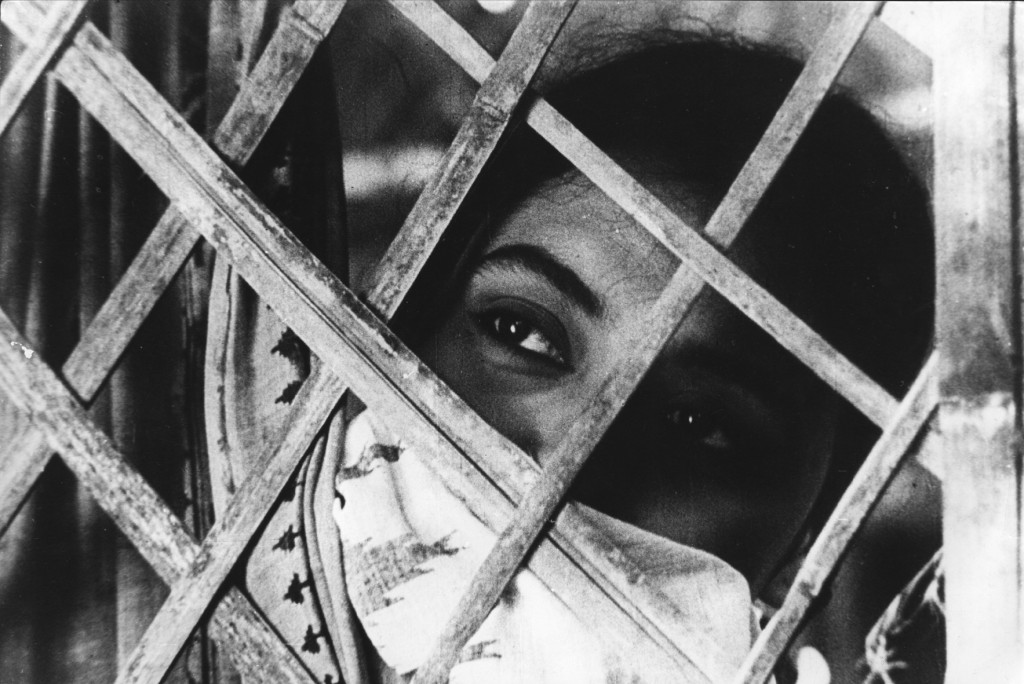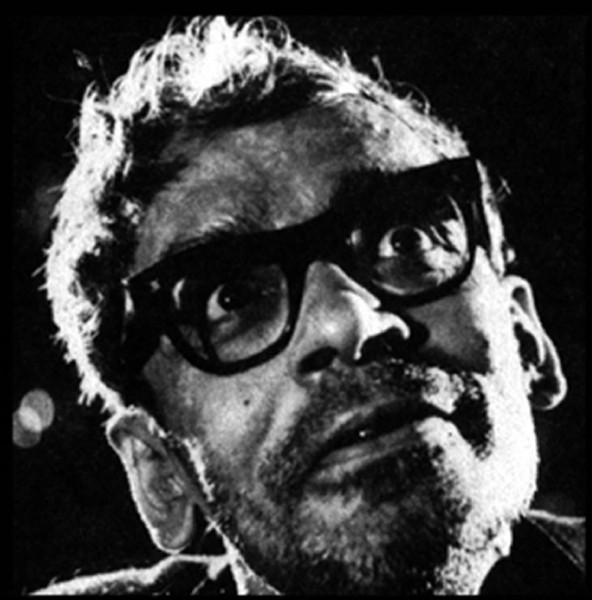In 2008 when my sister was touring Japan, I asked her to carry DVDs of Yasujiro Ozu’s films. On her return, she told me she did not meet one person who had heard of him. I was heartbroken. Ozu was perhaps paying the price of being too ‘Japanese’ in a country consumed by American capitalism. Back in India, I recollected how I had not heard of Ritwik Ghatak till I had arrived at the Film and Television Institute of India, (FTII), Pune in 1988, 12 years after the Master had passed away on February 6, 1976, at the age of 50. Today it has been forty years since he succumbed to alcoholism and illness. Perhaps Ghatak was too ‘Indian’ to catch up with other masters who were recognized by the western world.
Back in the 70s and the 80s, information technology had not arrived, and Lucknow was a mofussil city with Bollywood potboilers being the only access to cinema. Like any child of my generation I was brought up on Rajesh Khanna and Amitabh Bachchan. Mayfair, the cinema hall of the English speaking snobs of Lucknow, screened either Hollywood fare or there were parallel cinema movies with Shyam Benegal, Ketan Mehta and Saeed Mirza at its helm. My introduction to Satyajit Ray and Mrinal Sen was thanks to Doordarshan after the advent of the National Network due of the Asian Games. We knew Ray was a genius and Pather Panchali a landmark of Indian cinema. But why that was so no one told us. They were all realistic films outside the mainstream hemisphere, which went to the festivals, won awards, because they were all slow moving films which ‘sold’ the poverty of India to the West. Supriya Chaudhary who played Neeta, the iconic character of Ghatak’s Meghe Dhaka Tara, was at the time, nothing more than Uttam Kumar’s girlfriend to me. Such was the level of film illiteracy in my hometown. These films did catch my fancy though.
At the FTII, the bhadraloks of Bengal, brought up on Kolkata’s film society culture greeted me with a flurry of unheard of names from World (and Indian) cinema and Ritwik Ghatak’s was one of them. Soon after, I ducked the bouncers of Goddard et al, I found myself sitting in the institute’s main theatre watching, Meghe Dhaka Tara. This is Raakhee’s Tapasya I exclaimed to myself! However, this was the beginning of my long and everlasting bond with the emotional genius of Ritwik Ghatak. Meghe Dhaka Tara not only introduced me to Ritwik Ghatak but to a whole new way of looking at Indian films. The neo-realism of Ray and Benegal were not the only idioms to look forward to, there were alternate creative routes as well. It was the epic approach of Ghatak that made me curious about his form. The late Sagir Ahmed, my screenwriting teacher and a student of Ghatak unraveled the epic approach of Ritwik Ghatak and therein lies the seminal difference between Ghatak’s approach to social concerns and that of the other neo-realists.
Ghatak abandons the classical, cause and effect dramatic narrative approach in his films and brilliantly adopts the episodic, epic structure. Whether it is Neeta’s struggle in Meghe Dhaka Tara or Sita finding refuge in a brothel in Subarnarekha, these stories of displaced people as a result of the partition of East Bengal (now Bangladesh) are told in episodes of various chapters from their lives to create a kaleidoscope of their tragic existence. They are melodramatic but not always dramatic.
Ghatak most effectively used melodrama as a Brechtian alienation device. His use of sound and music, ill-balanced frames, obtuse angles and sudden cut from extreme long shot to extreme close up never allowed the viewer to settle down. One could never be a passive audience of a Ghatak film. And of course, the mythic connection of his images and characters added a dimension of unfathomable depth. Mythology with strong and sustained reference to Mother Earth was a leitmotif in his films.
An induction to these elements of Ghatak’s cinema at FTII swept me off my feet. The more sanitized and politically correct Ray seemed less exciting in comparison. The Ray versus Ghatak debate is legendary in the context of FTII and I was quick to jump on the Ghatak bandwagon. While Ray’s precision was revered, It was Ghatak’s wild ways of filmmaking that caught the fancy of young minds like mine. Ghatak was the master of the new world, emotionally potent and richly layered. It was the rough edges of his films that seduced me more than anything else. Look at Jukti Takko Aar Gappo, a film I find brilliantly inconsistent. It was his most autobiographical and politically prophetic film.
Ghatak’s nervous energy which reflected in all his films was infectious. I wonder if there is another filmmaker of this stature besides Jean-Luc Goddard who interprets his political concerns with aesthetics of high art. Both Goddard and Ghatak had Marxist concerns and used cinema as a very potent weapon but took it beyond sloganeering.
Ghatak could neither comprehend the tragedy of partition and migration nor emotionally accept the pain and misery it brought to the millions. The imperialists had divided his land and like him had left the entire country in tears. Who else can be more relevant today than Ghatak when the world is being butchered by divisive forces, displacement is a world crisis and right wing polarizers are staging the theatre of the absurd in our country and the world over. That he did not get the recognition due to him in his lifetime is an indication how disconcertingly anti-establishment his cinema was. His ill-kempt personality, sharp tongue and excessive drinking of alcohol was just the kind of public relations he could well avoid but then he would not have been Ritwik Ghatak. Uncompromising and one with his films. Ghatak would have been 90 today and I wonder what kind of films he might have made had he painfully witnessed his country become a communal shamble.
As soon as we enter film school, the creative enormity of the cinematic art depresses us. It was Ghatak who came to my rescue with his most remembered film line from Meghe Dhaka Tara. Today when I am 50 but without a film under my belt, and the world around me seems to be falling apart, and the feeling of alienation is absolute, Ritwik Ghatak still makes me say, “ Dada, ami bachtey chai… (Brother, I want to live…)”




I want to congratulate the writer of this piece, whose name, unfortunately, I couldn’t find here. I think I must have been in my second year when Meghe Dhaka Tara was screened, in college, during one of the annual fests. I was completely blown over by the Ghatak phenomenon. The beginning and the concluding scenes continue to send shivers down my spine even today: What Supriya does with her torn slippers in the beginning and how the other woman goes about tackling the same situation toward the end, as she is seen walking away, is so telling that whenever I revisit the moment, I cannot help but admire the genius that Ghatak was.
This is one of the finest pieces that I’ve read on Ghatak. Thank you, dear writer.
Regards
Sharad Raj is my(the writer) name. Thank you Ipshita.
Dear Sharad Raj,
This is one of the most eloquent pieces on Ghatak and his Meghe Dhaka Tara where I could feel his emotions seep through your writing. I had MEGHE DHAKA TARA as one of the chapters of my doctoral thesis where I was arguing differently, more as a woman looking at the world through Nita and in Nita but yours is an expression of a trained filmmaker whose window to the world of Indian cinema opened at the FTII. Congratulations Karan for using his piece and congratulations Sharad for a wonderfully enlightening and enriching article.
Warmly, more grist to your pen/
This is the most poignant pieces of cinema review i have ever read. I landed here googling “ami bachtey chai”
Sorry ‘one of ‘ missing.. so today I plan to watch “Jukti”